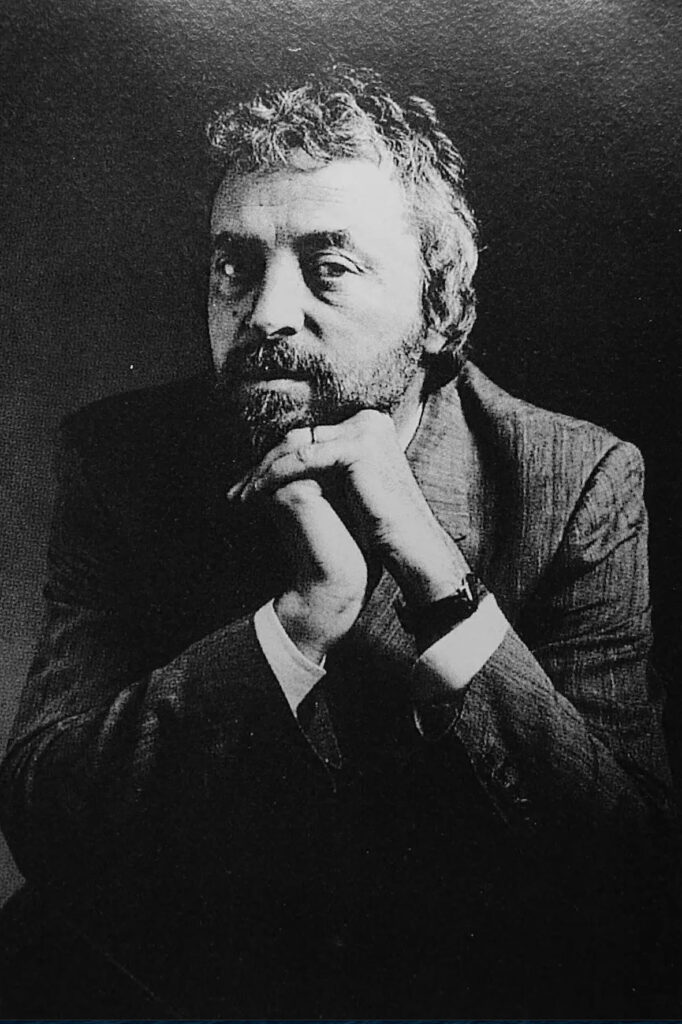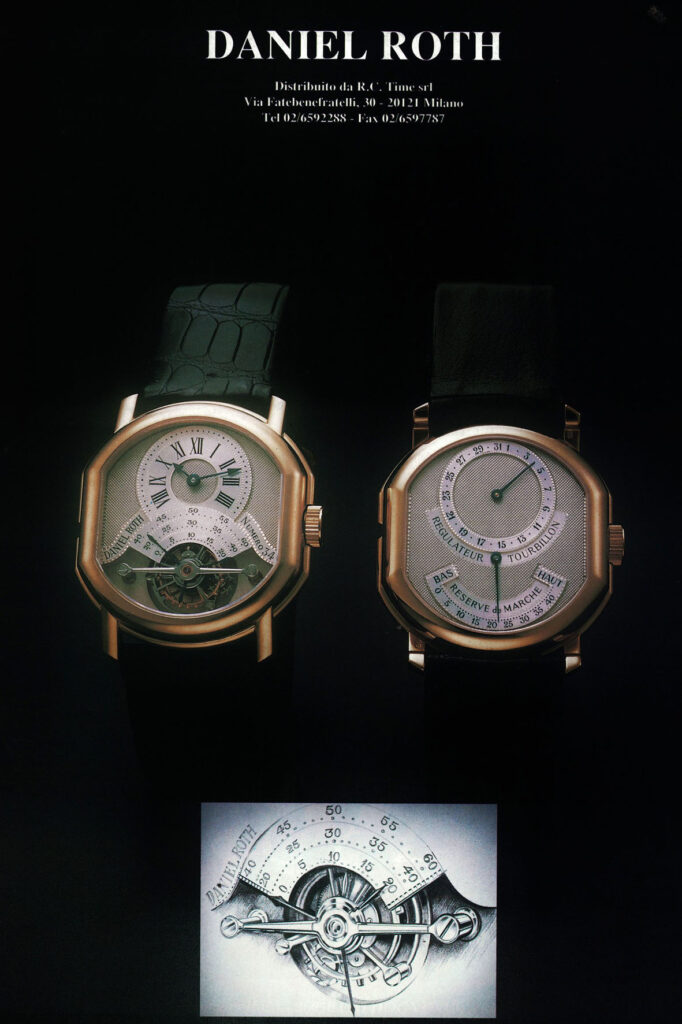Daniel Roth: The Story Of A Master
14 June 2021“Life chooses music, we choose how to dance it,” the English Nobel Prize-winning writer John Galsworthyonce said. A sentence expressing the idea that each of us has the way to shape his or her destiny in their own hands. A sentence that suits well the story of Daniel Roth.
A master of contemporary watchmaking who has found his own way clearly paved, starting from his childhood. Born in Nice in 1945, Daniel Roth was always and immediately immersed in the watchmaking world: his grandfather and his great-grandfather were watchmakers from Neuchâtel, who moved to the French Riviera where they had opened a small repair workshop. That was Daniel’s first “playground”.
As soon as he grew up, Daniel attended a three-year watchmaking course in Nice. Even if the Côte d’Azur air is healthy, once his studies were completed Daniel Roth decided that the right place for him would be Switzerland – so he went back the way his ancestors had traveled and settled in the Vallée de Joux. The ideal gym to train his genius.
After working for various manufacturers, including Jaeger-LeCoultre, he was hired by Audemars Piguet. He spent seven years at Le Brassus during which, as the only watchmaker who did not come from within the company, he stood out for his extraordinary abilities and was noticed by the maison Breguet.
DANIEL ROTH AND BREGUET: FROM MASTER TO MASTER
At that time – the early 1970s – Breguet had been taken over by the brothers Jacques and Pierre Chaumet, owners of the homonymous jewellery brand, who wanted to revive the splendor dating back to the work of Abraham-Louis Breguet. These weren’t good times for the watch industry, grappling with the rise of quartz. They thought Roth was the right person for the brand.
So, the brothers received Daniel Roth’s CV, applying for the position of master watchmaker. Two pages, one with the experiences acquired, the other with a list of things that he still should have known and learned. An unconventional choice, which earned him the job and was Breguet’s fortune. Also because, once hired, Roth took an extraordinary initiative: he decided to combine his work with another year of studies to learn Abraham-Louis Breguet’s techniques, inventions and secrets, analyzing his archives and learning everything he could about his work.
FROM FRANCE TO SWITZERLAND
It was 1973 when Daniel Roth finished his year of studies on Breguet and, at the time, the brand was firmly French – not only for its history but also logistically: the production took place in France and the only boutique was located in Paris. The center of traditional watchmaking, however, was increasingly Switzerland, committed to fortifying its tradition against the onslaught of quartz: remaining in France was not a logical choice from an industrial point of view. So it was Roth, in 1976, the one who helped Breguet to settle in Le Brassus. This marked the beginning of the brand’s rebirth.
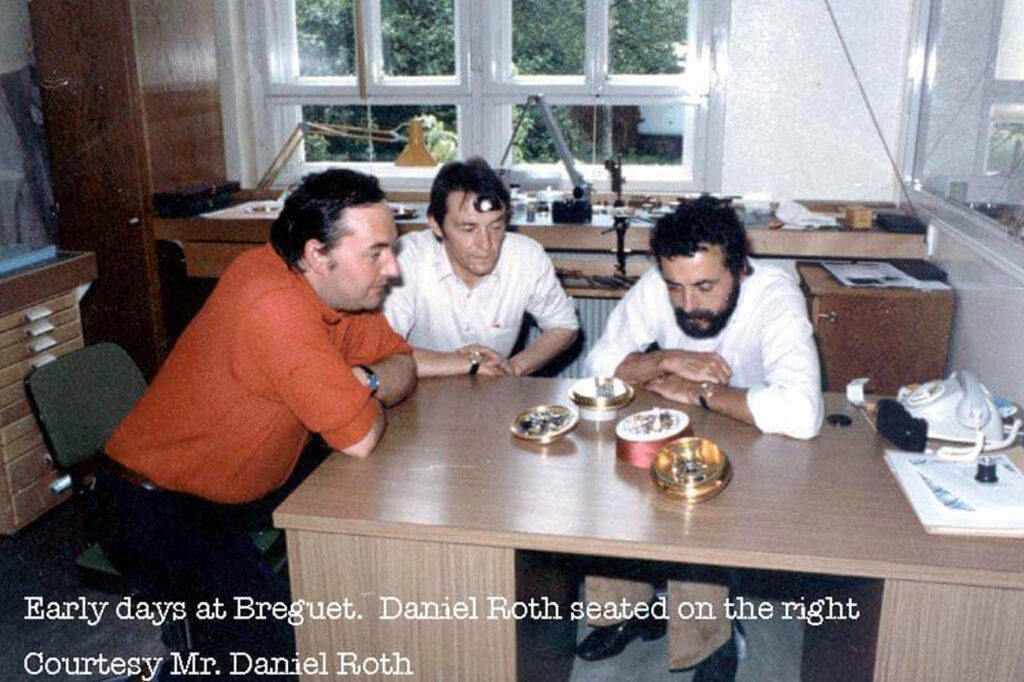
Daniel Roth spent 14 years in the maison and, together with François Bodet, relaunched the brandgiving it that particular aesthetic that would make it recognizable again (Breguet hands, coin case…) and working on the most exclusive complications – from the perpetual calendar to the tourbillon – using calibers mainly based on Lemania’s and Frederic Piguet’s calibers. Among these complications let’s only mention the perpetual calendar ref. 3130 based on Frederic Piguet 71.
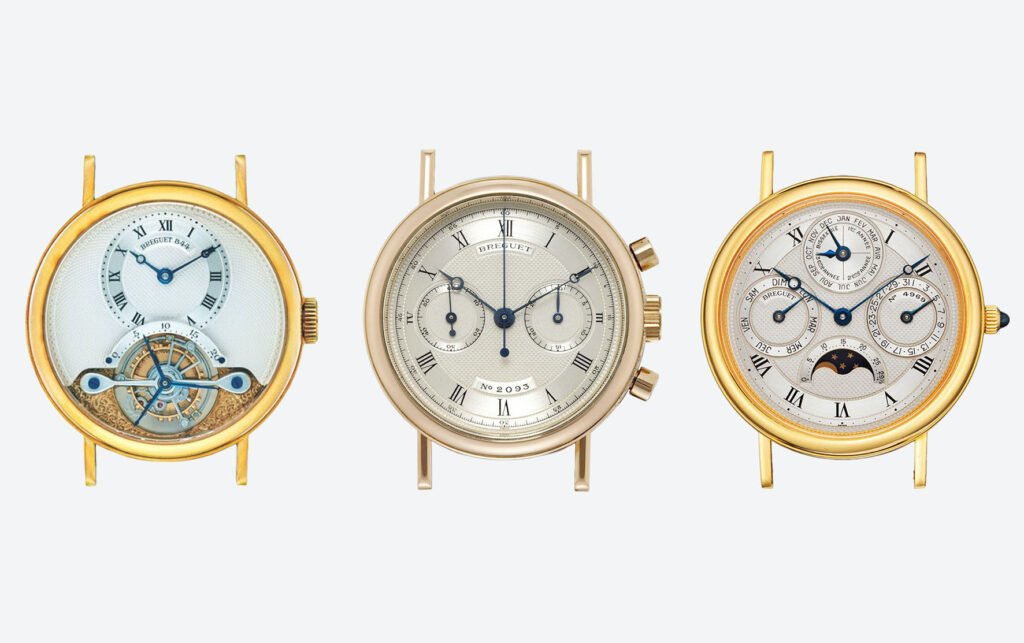
The experience at Breguet ended in the late 1980s in a traumatic way when Chaumet filed for bankruptcy and the brand was sold to Investcorp in 1987. A year later, both Bodet and Roth left the company but the latter, now mature and well known, was ready to launch his own brand with a clear vision of what kind of watches he would make and how he would do it. Starting with his first workshop in Le Sentier.
ROTH AND BREGUET: THE STYLES IN COMMON
The style of the watches that Daniel Roth created with his own brand is influenced by Breguet’s lessons. Dials with hand-made guilloché finishing, blued hands, cases in precious metals, a very high level of manual finishing both on the dial and on the movement – with the choice of creating skeletonized versions of his watches to highlight them – and the numerals on many of his watches’s dials are all references to his master’s legacy.
But Roth, as talented as he was, certainly couldn’t limit himself to paying homage to Breguet without innovating himself. So here is the first of his benchmarks: a case in a completely new shape. His double ellipse case, neither round nor rectangular, balanced both shapes thanks also to the stepped bezel and the straight and sharp lugs, the latter still a Breguet heritage.
Roth also made some more refined design choices during his early independent work, which are exemplary of his unusual and distinctive vision of watchmaking. For example, his tourbillon integrates a three-armed seconds hand, in which three blued hands of different lengths run on three different registers. Likewise, the arrangement of its perpetual calendars is anything but traditional, with an original distribution of the subdials.
Finally, thanks to his many years of experience with Breguet, he chose to create movements relying on high-quality ébauche (basic parts of the movements, in technical language), made by specialized companies – mainly from Lemania. Starting from those ébauches, Daniel Roth worked on creating the movements for most of his watches: minute repeaters, perpetual calendars, tourbillons, three hands, chronographs.
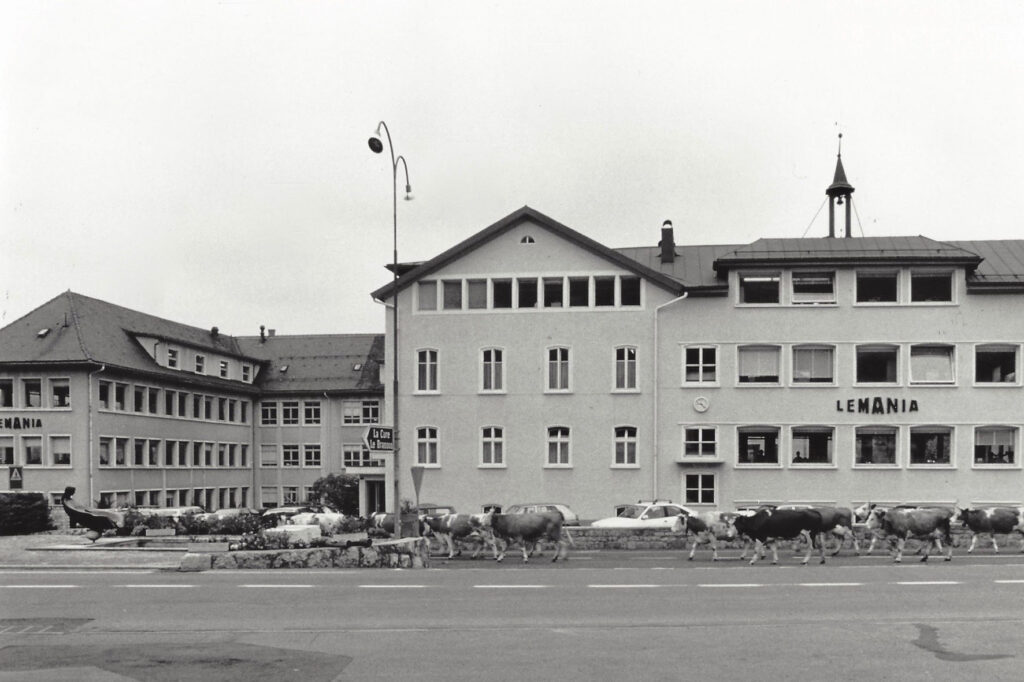
THE MASTERPIECES: TOURBILLON C187
Starting with the Lemania caliber 387 ébauche, Roth built the first watch under his own name. And from what could he, devoted to Abraham-Louis Breguet, begin if not from a tourbillon? In short, not exactly simple even if your name is Daniel Roth. The watch, the reference C187, was developed in 1988 and launched the following year; after all, the Lemania 387 caliber was designed by Roth during his Breguet years, during which the French brand received most of its movements from Nouvelle Lemania – it was Nouvelle Lemania who provided the machines and skills to industrialize the movement’s production.
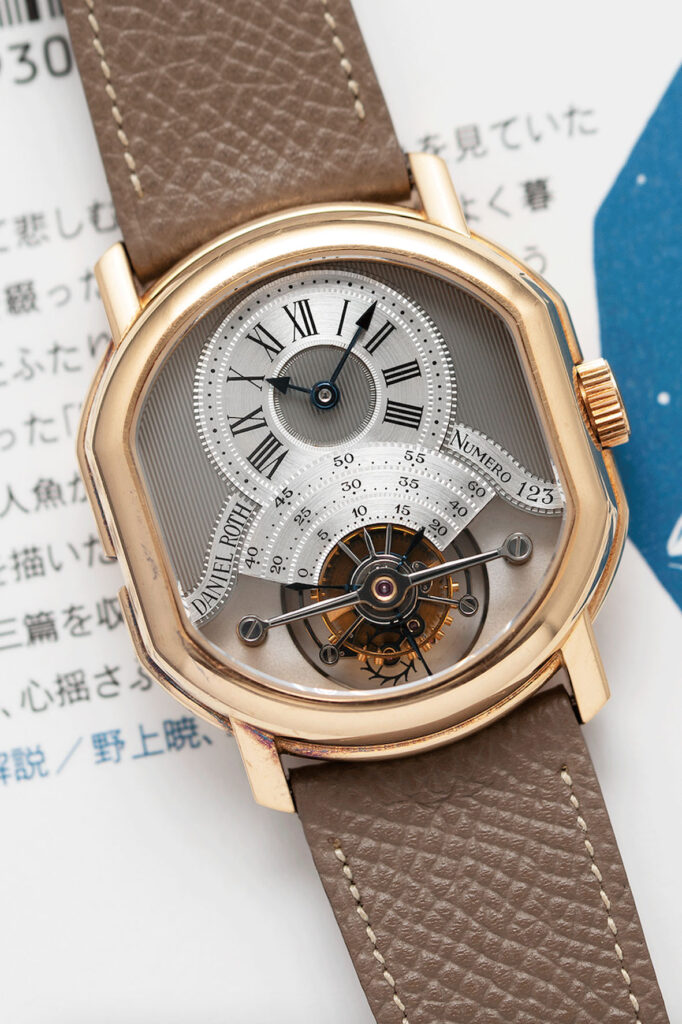
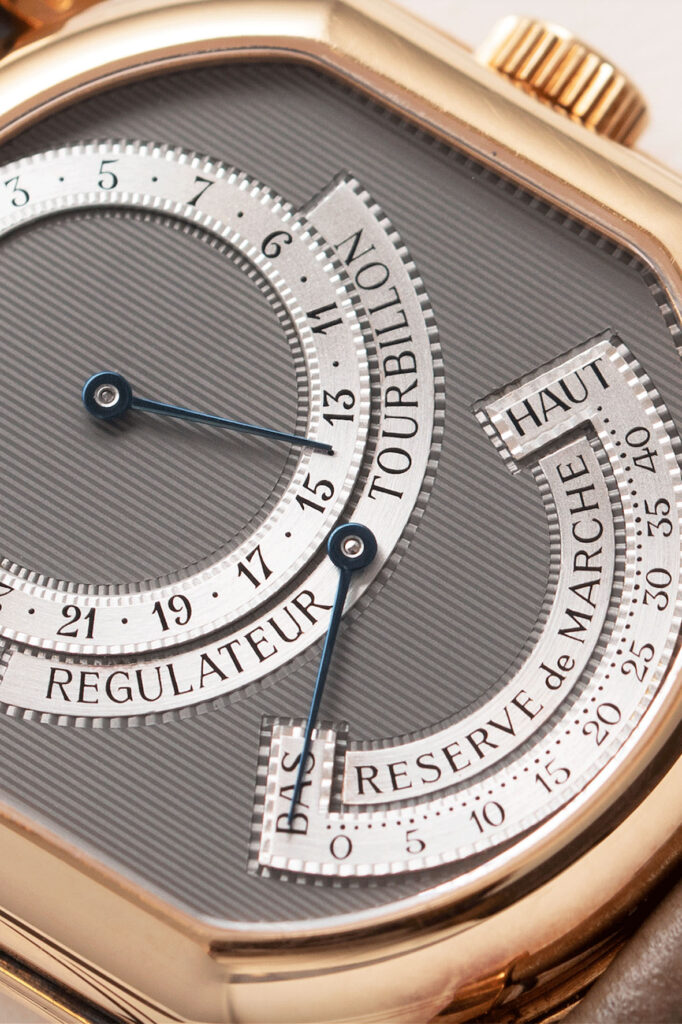
Daniel Roth Tourbillon C187 | Credit: Sean Song Watches
Some of Daniel Roth’s early tourbillons were produced for celebrated London retailer Asprey. William Asprey commissioned 24 of them in the early 90s, all in yellow gold, which featured Asprey’s name on the dial and Roth’s name on the back. The dial of the C187 features an elongated bridge and an unusual fan-shaped seconds track, with these indicated by the three-armed seconds hand, attached to the tourbillon cage. The date and the power reserve indicator are featured on the back of the watch.
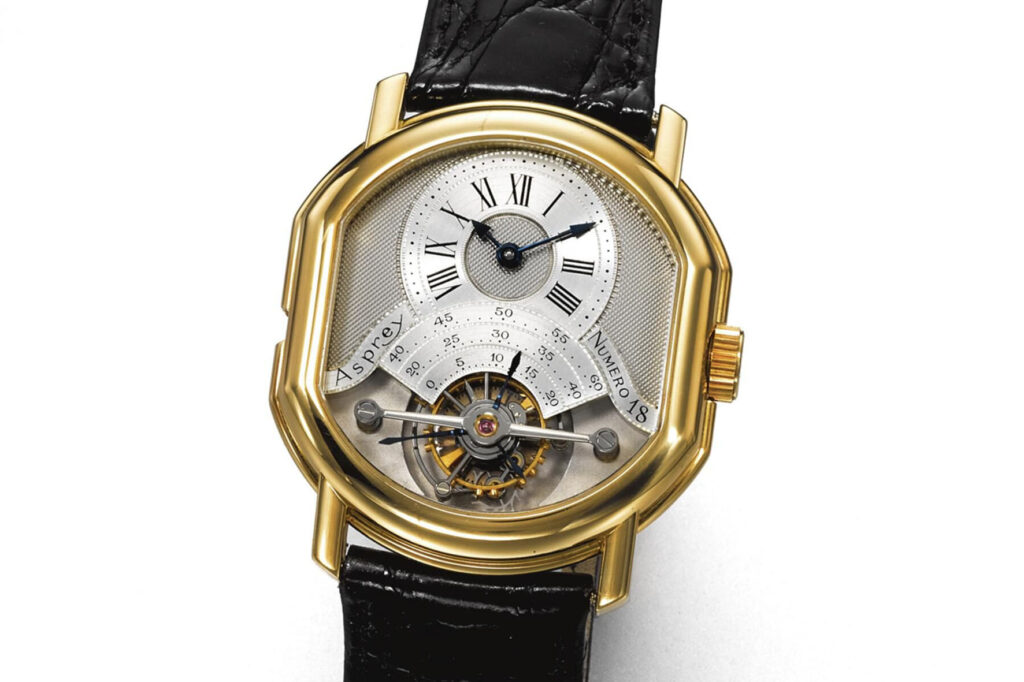
Characterized by the typical double ellipse case, Daniel Roth’s first tourbillons had a Clous-de-Paris decorated dial while the following ones had a vertical stripe decoration, which has become almost a trademark. The cases were made primarily of yellow, pink and white gold, and only rarely platinum. There is also the interesting case of 20 steel watches made at the request of Roberto Carlotti, distributor of Daniel Roth in Italy, a market in which steel has always been appreciated. Needless to say, they have become highly sought-after references among Daniel Roth’s collectors.
THE MASTERPIECES: CHRONOGRAPH C147
After the tourbillon, the natural progression for Daniel Roth’s creations was the chronograph, in 1990. It was a manual winding chronograph, based on the Lemania 2320 caliber. Also in this case, initially the two subdial were decorated with Clous de Paris which were then replaced by vertical stripes.
As for the materials of the chronograph, steel was left aside to favor precious metals: yellow, white, pink gold and platinum. The latter was combined exclusively with the black dial, a color that Daniel Roth matched also with white, silver, salmon and even electric blue. It is worth noting that the chronograph was created with both a closed case back and a transparent case back. In both cases, the caliber finishing was identical.
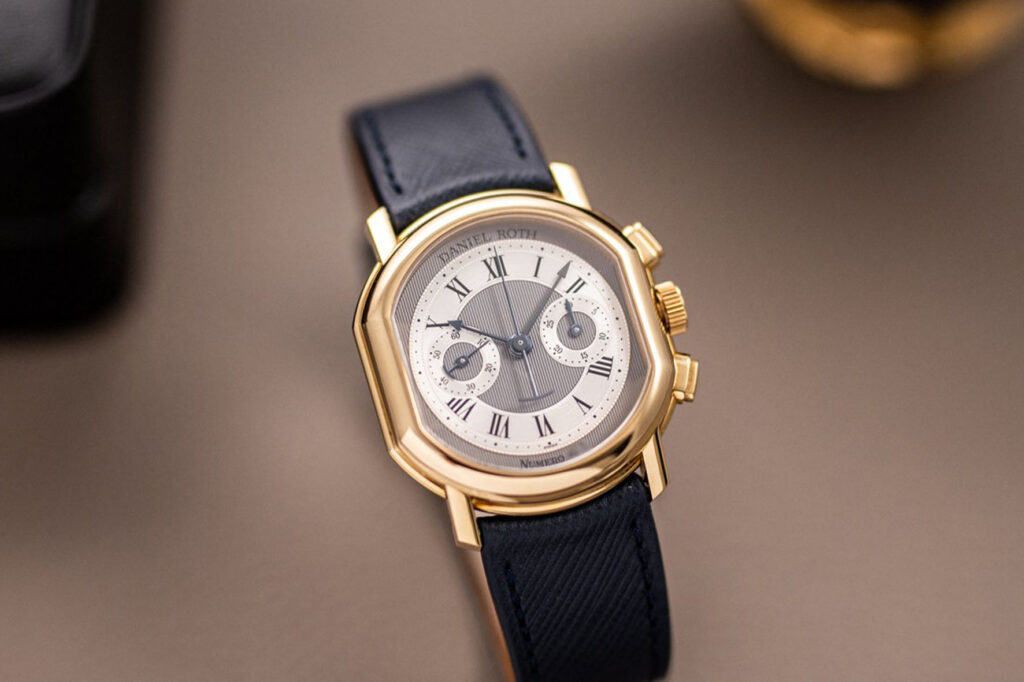
Daniel Roth also tried creating particular versions such as the monopusher chronograph and the split-second chronograph. The first was again made based on Lemania calibers, the 15CHT or 2220, movements dating back to the 1930s and therefore difficult to find. For this reason, only 52 pieces of the monopusher were made, 36 in yellow gold and 16 in platinum.
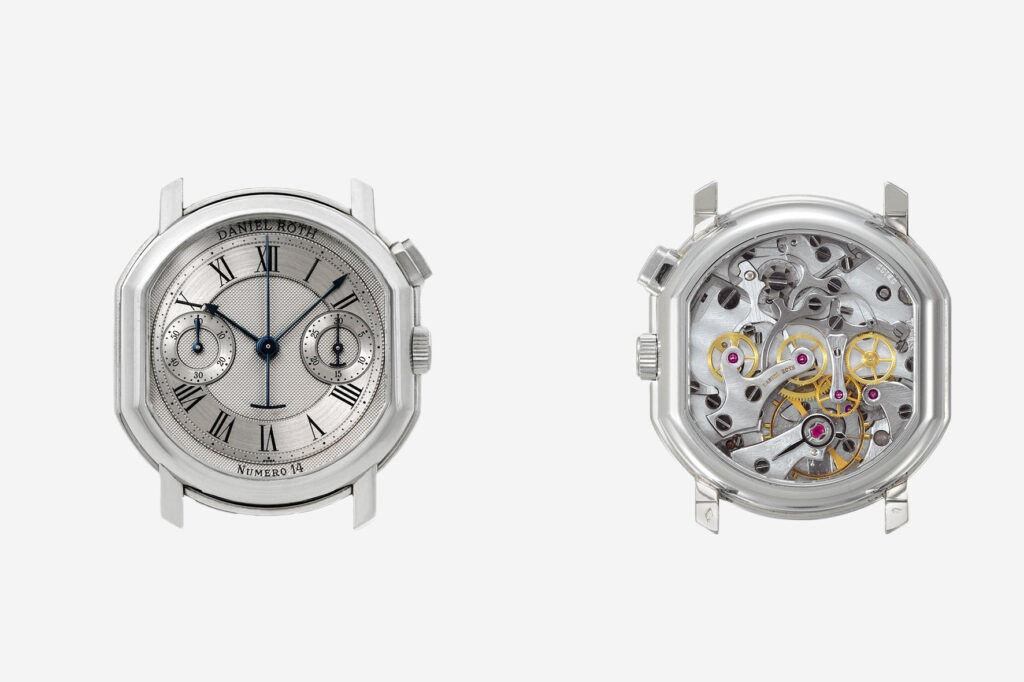
Little is known, however, about the split-second chronograph, except that it was based on a Venus 179 caliber of which a supply in new-old-stock conditions was found in a warehouse. It was the early 90s and the calibers were distributed among different brands that modified them and encased them in their own watches – among them was Daniel Roth, who produced very few pieces.
In the mid-90s, Daniel Roth also produced some automatic chronographs, based on Zenith’s El Primero caliber. They were aesthetically different from the classic chronographs of the brand because, on the dial, there were three subdials instead of the usual two.
THE MASTERPIECES: Ref. C107, C167, C127
In addition to the complicated models, Daniel Roth ventured into the 90s with three-hand watches, making sure that even a seemingly simple watch could reach peaks of excellence. The 1990’s Reference C107 was his first try at approaching an automatic movement, this time based on Frederic Piguet’s caliber 71. It was a basic watch with only the hours and minutes hands, a gold case and the vertical stripe decoration on the dial.
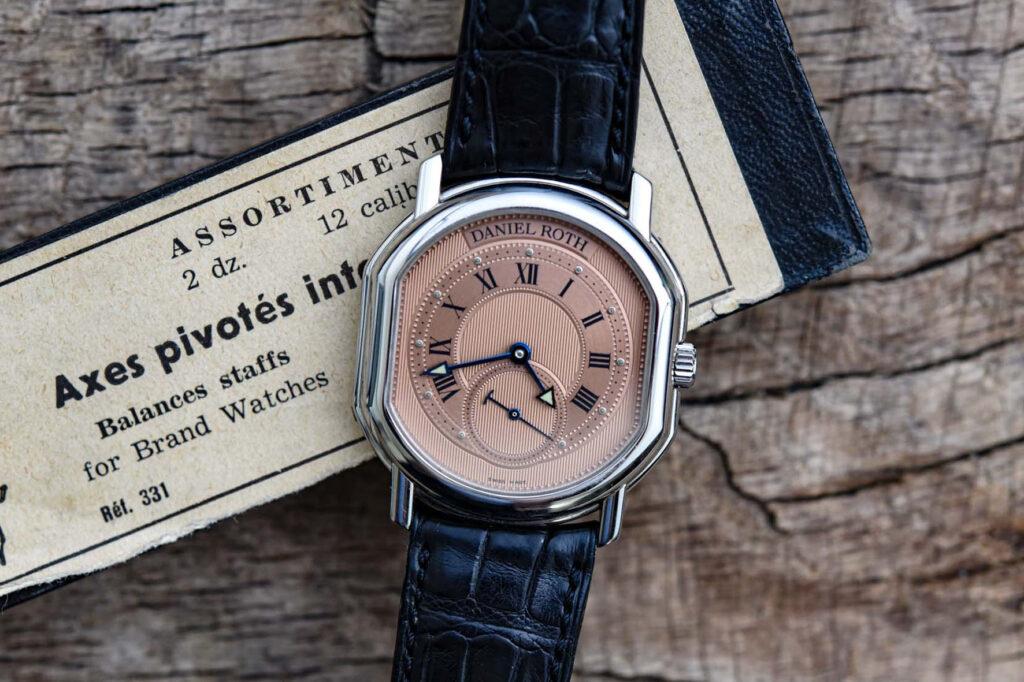
The 1991 reference C167 marked the return to the manual caliber, again based on Frederic Piguet; the transition from automatic to manual led to a significant reduction in the thickness of the case, which was downsized from 2.4 to 1.73 mm. This reference also came out between 1990 and 1991 in some versions adorned with diamonds.
The reference C127, presented at Baselworld in 1991 and marketed two years later, is certainly more original. This is a retrograde three-hand model, perhaps inspired by a pocket watch by George Daniels, in which the hours are indicated on a fan-shaped dial, with the hand jumping to the other side of the dial when it reaches 6 o’clock. In this way, it never crosses the seconds subdial, positioned in the lower part of the main dial.
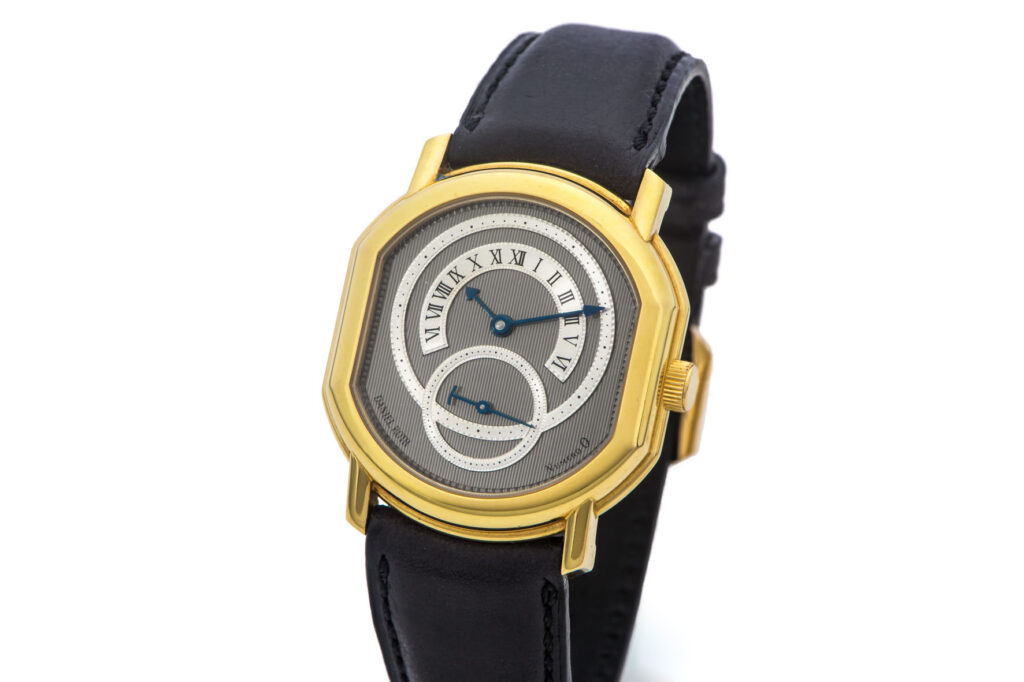
Daniel Roth produced the reference C127 with cases in precious metals, sometimes combining parts in rose gold and white gold, and using both solid and skeletonized dials. The first products have more elegant and light shapes and fonts, while from the mid-90s the graphics become more impactful, also with the use of luminescent material on the hands and indexes.
THE MASTERPIECES: Ref. C117
Could a perpetual calendar be missing from Daniel Roth’s production? Certainly not. To create one of the best complications in watchmaking, he collaborated with another master, Philippe Dufour. On the watch, presented in 1993, the subdial was used to indicate the day of the month on the outside and the year on the inside; the month and day of the week were displayed in two windows above this subdial, or through two smaller auxiliary dials overlapping the hours and minutes track. For a lack of space, Roth’s serial number had been moved to the edge of the caseback.
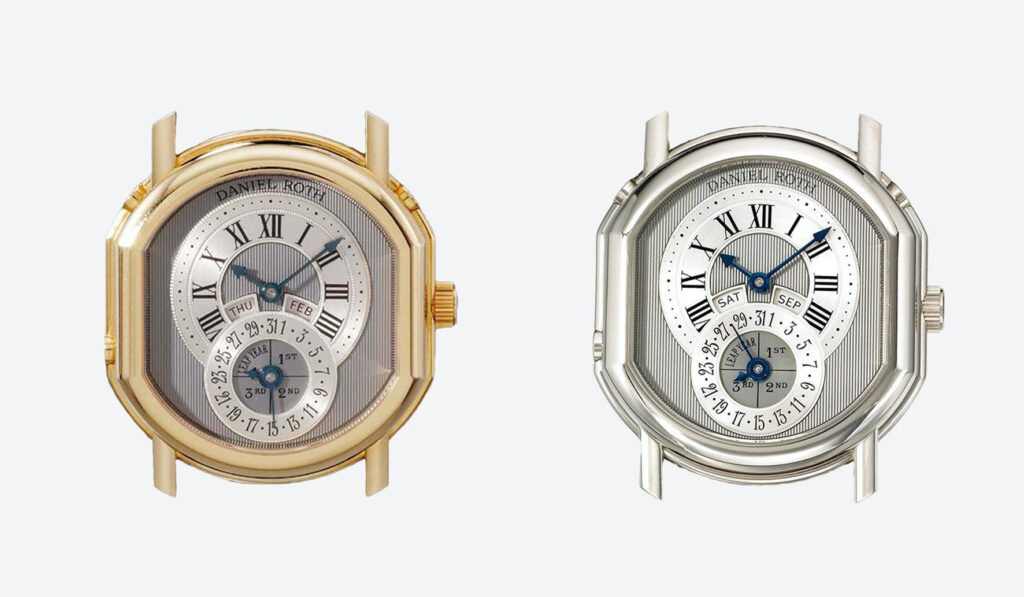
A seemingly “simple” watch – but it hid the attempt to create the first instant perpetual calendar in the world, in which all the indicators should have instantly flicked together at midnight. Both Roth and Dufour tried to work on this feature for months, but then realized that too much energy was needed for all the indicators to jump at midnight. Thus, compared to the prototype presented at Baselworld in 1991 which had windows for the day and the date, the digital display was replaced by the two auxiliary dials, which required less power to move all the gears.
The result was nevertheless exceptional because in the version with the windows, the day and the date changed slowly at midnight, while in the version with the small auxiliary dials the flicking was in fact instantaneous.
DANIEL ROTH’S LATEST WATCHES
In the last few years working as an independent watchmaker, Daniel Roth grappled with another complication, the minute repeater, which never went into production. Based on the Lemania 389 caliber, it seems that only three pieces were built, in yellow, white and pink gold. In 1999, however, to celebrate the brand’s tenth anniversary, he created the Papillon in 250 pieces: 110 in pink gold, 110 in white gold, 30 in platinum. The watch had the jumping hours and retrograde minutes indications.
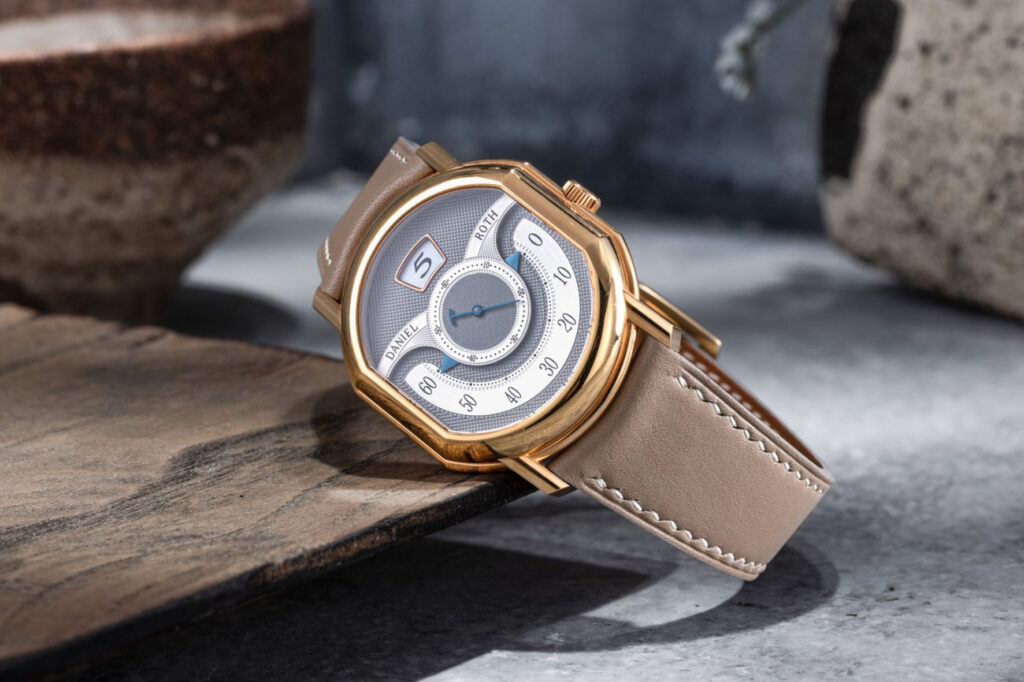
These were his last pieces as an independent watchmaker. For some time now, Daniel Roth had no longer been the main shareholder of the company, but he remained involved in both the production and creative processes. However, the road was paved and, in 2000, the company was sold to Bulgari. Roth remained with the manufacture for a few months, and he left the following year.
THE JEAN DANIEL NICOLAS BRAND
Daniel Roth’s recent story is tied to the Jean Daniel Nicolas brand. A “tailored” watch atelier whose name combines the names of Roth, his wife and his son. With his wife, who is also a watchmaker, and his son, who follows in his footsteps, they produce about three watches a year. These are commissioned pieces, developed around the tourbillon he helped bring back to life after Breguet’s interpretation.
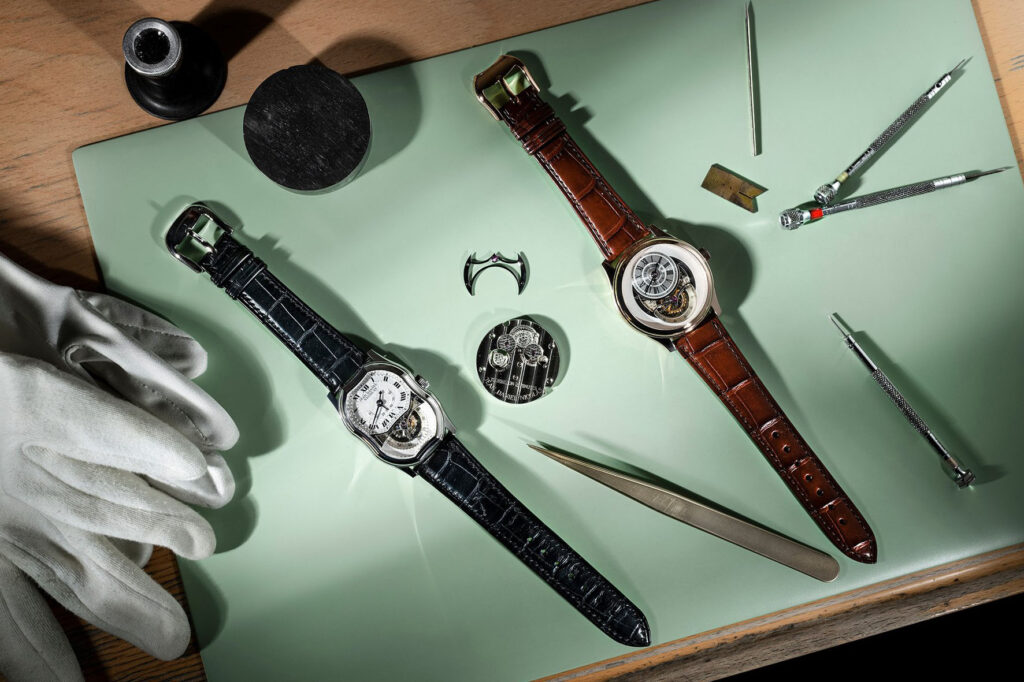
Although his great entrepreneurial adventure is over, the fire of passion and creativity has not been extinguished in Daniel Roth. Enthusiasts and collectors can only be happy for this while dreaming of wearing one of the Master’s latest creations on their wrist.
By Davide Passoni

